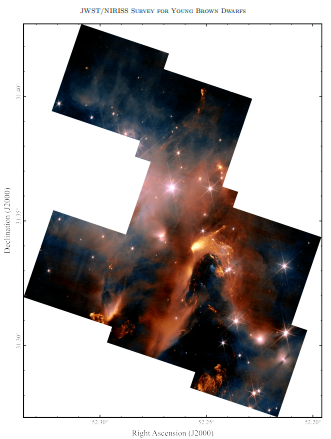2024-08-27 ミシガン大学
<関連情報>
- https://news.umich.edu/in-six-new-rogue-worlds-webb-telescope-finds-more-star-birth-clues/
- https://arxiv.org/abs/2408.12639
JWST/NIRISSによる若い褐色矮星と自由浮遊惑星のディープスペクトロスコピー調査 The JWST/NIRISS Deep Spectroscopic Survey for Young Brown Dwarfs and Free-Floating Planets
Adam B. Langeveld, Aleks Scholz, Koraljka Mužić, Ray Jayawardhana, Daniel Capela, Loïc Albert, René Doyon, Laura Flagg, Matthew de Furio, Doug Johnstone, David Lafrèniere, Michael Meyer
arXiv last revised 27 Aug 2024 (this version, v2)
DOI:https://doi.org/10.48550/arXiv.2408.12639

Abstract
The discovery and characterization of free-floating planetary-mass objects (FFPMOs) is fundamental to our understanding of star and planet formation. Here we report results from an extremely deep spectroscopic survey of the young star cluster NGC1333 using NIRISS WFSS on the James Webb Space Telescope. The survey is photometrically complete to K~21, and includes useful spectra for objects as faint as K~20.5. The observations cover 19 known brown dwarfs, for most of which we confirm spectral types using NIRISS spectra. We discover six new candidates with L-dwarf spectral types that are plausible planetary-mass members of NGC1333, with estimated masses between 5-15 MJup. One, at ~5 MJup, shows clear infrared excess emission and is a good candidate to be the lowest mass object known to have a disk. We do not find any objects later than mid-L spectral type (M < ~4 MJup). The paucity of Jupiter-mass objects, despite the survey’s unprecedented sensitivity, suggests that our observations reach the lowest mass objects formed like stars in NGC1333. Our findings put the fraction of FFPMOs in NGC1333 at ~10% of the number of cluster members, significantly more than expected from the typical log-normal stellar mass function. We also search for wide binaries in our images and report a young brown dwarf with a planetary-mass companion.



